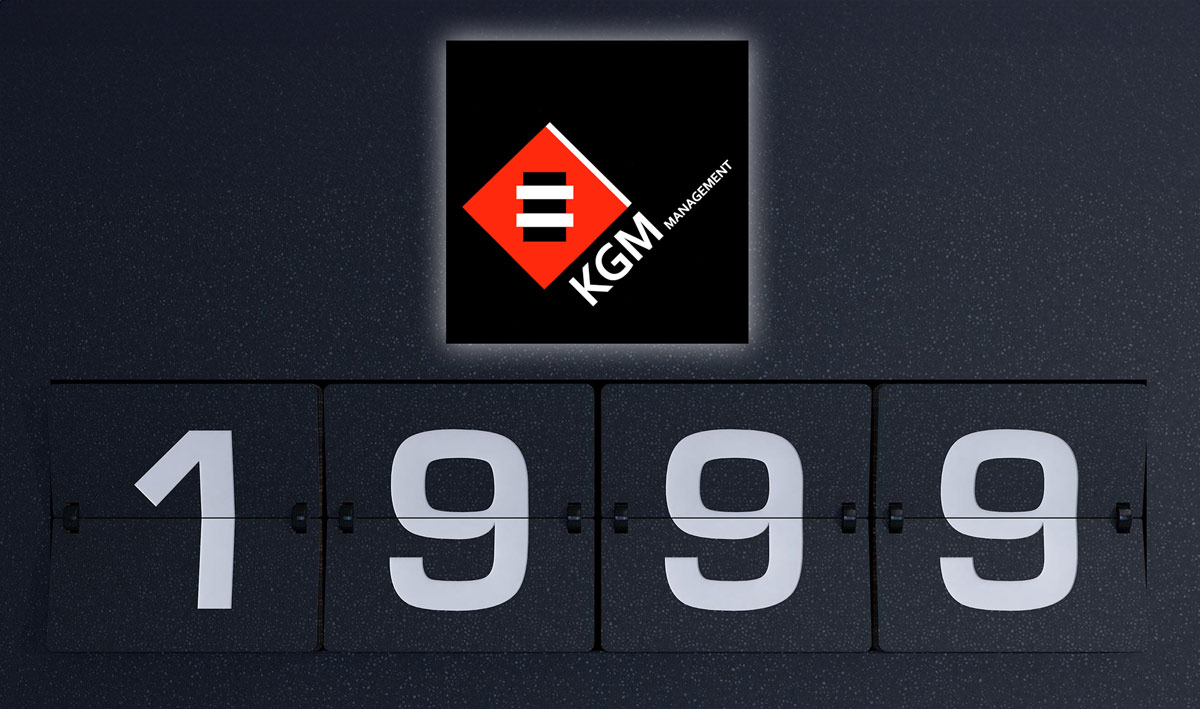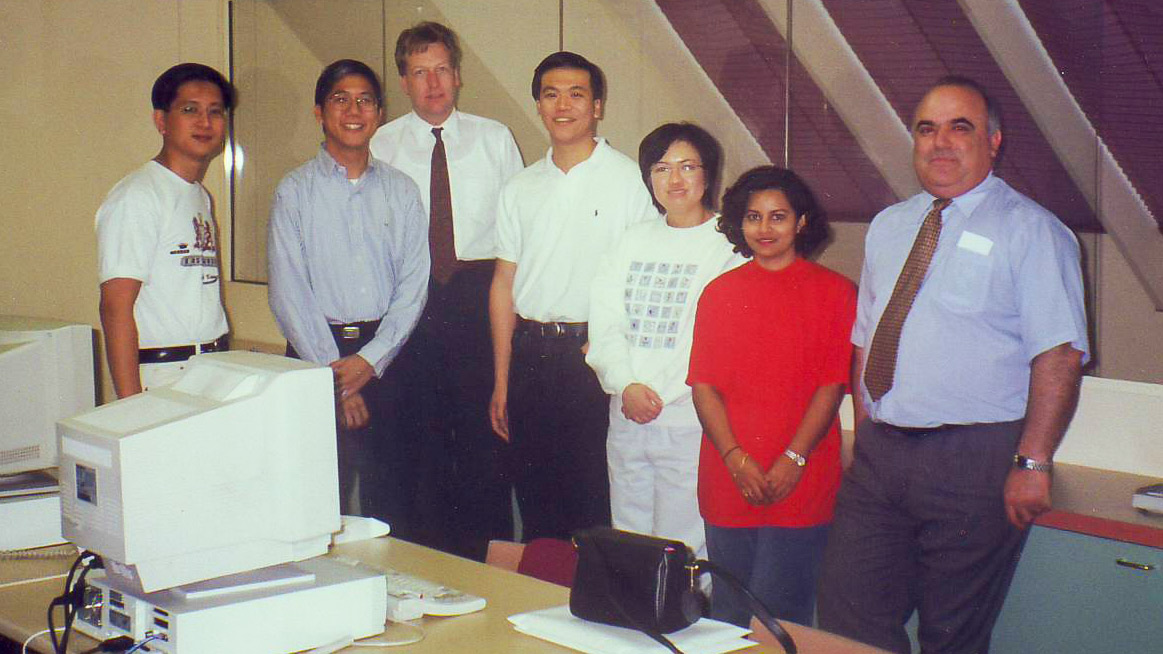
In 1998 Frank began searching for a database system we could work with to enable the development of a new Windows®-based DMS. We needed to stay ahead in the technology race. We held a meeting to discuss the pros and cons of taking on another scary new project and there was no dissension. We all wanted to forge ahead. Frank would design it, Michael would keep a watchful eye on progress and intercede if he thought we were overreaching ourselves, and I would do my best to ensure the client list continued to grow to help fund the wages of our ever-increasing staff.
The new DMS would be called UNITS® because large items such as cars, trucks, tractors, and agricultural machinery are known as units in dealership language until configured to suit the wishes of the buyer. Frank employed some new programmers to write test programs but we couldn’t afford a system architect, nor expensive programming aids or test tools. He plastered the walls of his office with rolls of printer paper inscribed with data function diagrams, flow charts, business function rules and other unintelligible stuff designed to crystallise the way forward.
And so began another expensive four-year development program executed on a shoestring. We would need to make sacrifices.
The Millenium Bug
Meanwhile, there were other things to think of. Most people born before 1990 will remember the anguish around the millennium bug.
To explain, we need to go back in time. It was normal when writing programs in the 60s and 70s, to use two-digit date fields. In those days computer memory and disk storage were astronomically expensive and it made economic sense to design software programs sparingly. This would mean when the clock ticked over at midnight on New Year’s Eve 1999, computer systems with two digit date fields would revert to the year 1900 instead of 2000. The problem wasn’t confined to application software either as many hardware operating systems were also susceptible. Whipped up by the press, people weren’t sure of the effect this would have as they read warnings of elevators jamming mid floor and planes falling out of the sky. As it happened, midnight on the due date was the biggest anti-climax of all time. Nothing undue happened!
PACE 2000 wasn’t affected because Frank had foreseen the problem in the design phase in 1992, and our systems employed four-digit date fields. But without exception, our major competitors had character-based software with two-digit date fields. Paradoxically, this presented them with a windfall from the fees they charged their clients to upgrade their systems.
We also had a windfall in Indonesia where we were beginning to make sales. We were contacted by Mercedes-Benz and asked if we could prove that our software was compliant. After hearing our affirmative answer, they asked for a quote to computerise their three company-owned dealerships in Jakarta.
Our price was accepted without argument subject to two provisos. We had to sign a document guaranteeing Y2K compliance, and their three dealerships had to be processing live no later than one month before midnight on 31st December, 1999.
All went well and I look back fondly on the opportunity presented to us to add these three prestigious businesses to our customer base in one easy and profitable transaction.

Merger
Our growing business was cash strapped as we fought for a share of a very competitive market. I had read that market dominance is critical, and that only companies holding first or second position in any market can survive long term.
We discussed this at board level and agreed we should seek to merge with a competitor, with the proviso there needed to be synergistic and economic advantage in doing so. One plus one had to equal more than two.
I approached Ted Ainsworth, the owner of Systime – the second largest DSP in Australia. The principal asset we brought to the table was our commitment to the development of a Windows®-based DMS. The meeting was cordial as we discussed the proposal, and it appeared a deal could be done. We agreed that I would run the merged entity but when we finally got down to the definition of how the decision process would work, it was obvious Ted couldn’t see himself relinquishing control, so we amicably ceased negotiations. Systime was sold to an offshore DSP about 12 months later.
I reached out to Newmans Information Services, the next most appealing option. This DSP was established by Martin Newman, the owner of a prominent car dealership in Sydney. We met on neutral ground in the Qantas lounge at Sydney Airport. That first meeting lasted less than an hour but we achieved a lot. We concurred on the win-win possibilities and agreed that subject to due diligence, a merger would suit the aspirations of both companies.
A few months later in April 2000, the deal was consummated. We registered a new company called Auto-IT Australia Pty Ltd and most importantly, we could now truthfully claim to be the second biggest DSP in Australia and New Zealand by market share.
End of the Road for KGM Management
KGM had been active for 12 years. In that time, we’d self-funded the writing of a DMS and sold it to more that 200 dealerships. Some of these had been small country businesses selling cars, trucks or tractors, but many more had been very large businesses including the Di Vergilio chain of auto dealers in Perth, Federal Auto in Malaysia, and others. Practically all the dealers in Brunei were running PACE 2000 and in latter years we’d never lost a deal due to the inability of our software to compete successfully with the competition. This experience was to stand us in good stead during the design phase of UNITS®, our next generation DMS.

Before I close the KGM chapter, heartfelt tributes are due to the following talented staff members who were with us throughout the KGM years and some of whom stayed with us for the next 23 years of our Auto-IT iteration.
Frank Maiolo, Donna Carter, Jackie Fisher, Rohan Duncan, Chew Wan Ho, York Wai Wong, Peter Van Der Meer, Di Hastings, Peter Fritz, Clive Mills, Peter Hoy, Matthew Avadia, Gil and Lorna Earnshaw, and many others.

Thanks Ken. That certainly brings back memories.
What an indictment of the software industry that the 2-digit date problem still existed in 2000.
Designing for saving disc space had not been a valid criteria for a decade.
We have an anecdote, often quoted. Andrew Ferguson was asked by a client if there would be a Y2K probelm in their software. “Not in anything I ever wrote.” he replied.
Keep writing. It is important for these stories to be told.
Hi Peter, thanks for your comments. “Colourful characters” abounded in those days. Despite that I’m pleased you and I had the opportunity to take part in it all!
It wasn’t just press frenzy which whipped up Y2K worries. Everyone outside of the IT industry was concerned. Even the Chinese government……every top airline executive was ordered to be airborne at the witching hour. This concentrated their minds to solve the problem successfully.
A good read as always.
Hi Alison I didn’t know about the Chinese Government but I did opine in our client news letter in late 1998 that the Milenium Bug was shaping up to be the greatest beat up in the history of the human race, and so it was.
Woweee again reading the blog am struck how little I knew about what you were inviloved in. Overwhelmingly impressed as always. Arohanui
Hi Marg Arohanui from me too
Hi Ken, I too have decided that both Willy and I didnt know how involved you were in this. We did lose touch for a while and I can see why. Enjoyed the read. Take care. Lorraine.
Hi Lorraine we were pleased to here from Mick that you are well and in a good place since Willy’s passing. Hopefully we’ll to see you next year Take care- Ken